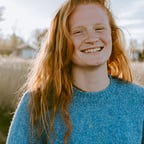Behind the Screens: eerieear
An interview with digital artist and sound designer Sebastian Pappalardo, better known as eerieear.
Sebastian Pappalardo is a digital artist with a background in media post production. He has been experimenting with digital art and creative development tools for many years. As he sought to extend the possibilities of restrictive proprietary software and expand his digital art production to fit his imagination.
In this interview we’d like to talk about his practices and tools, as well as work in the community and the way he copes with the radical and drastic changes in his practice resulting from the corona crisis.
What is your first encounter with live coding?
My first encounter with creative coding software was between 2006/2008 while studying sound for film. I got to know Max/MSP and immediately saw the possibilities of approaching sound generation using this graphical object environment. I later did some Processing but was soon overwhelmed with media work and had to pause my arts and technology project for a few years. My first experience with ‘code based’ live coding was much later, around 2016, as I joined the Creative Coders group in Buenos Aires and discovered first Gibber.cc, then Sonic Pi and eventually Tidalcycles, which I am still exploring today.
Which platform do you use and why?
I love all environments really, I am always curious to know more about their possibilities. I use mostly Tidalcycles because I found this environment the one that fits best to my creative mind. It allows for massive transitions in patterns and functions with very small changes.
Alex McLean made an incredible environment for multiple reasons. Big features are the incredible flexibility to control your pattern in many diverse ways and at many different points in your script, allowing for very agile control. One useful feature in particular is his mini-notation system which allows very easy and intuitive access to array contents using Haskell’s flexible approach to handling lists.
For visuals I use Hydra. I have also been using p5js a lot, and I am starting to make some progress in combining the two. Hydra is really hard to put into words. Olivia (Olivia Jack, red.) keeps building this super intuitive environment which is as beautiful as it is powerful. I am very happy to have spent many hours in hydra lately and still have to try the new features that were released these last few weeks and most likely will still keep coming for some time.
How has live coding influenced your way of making things?
It has had a huge impact on me. Mostly because of the way it exponentially expanded sound and visual creation possibilities. In sound it has allowed me to go deeper than ever in exploring the concepts of time and timbre. In the realm of the image, similarly, it has been a way of constantly re-thinking and projecting the possibilities of colour, textures and in particular with hydra an intuitive path to generate very fluid and organic digital materials.
In these times of lockdown, what can we learn from the live coding community in terms of their way of organisation?
I am very glad to be in touch with the live coding community, not only here in The Netherlands but worldwide. I found in it a spirit of hard work, openness, collaboration and friendship like nowhere else. It has been inspiring since the beginning and it continues to be so, particularly in times like this when the ability to adapt to an unpredictable scenario and the resilience to keep focus and traction are so vital.
Did the isolation force you to make adjustments to your current practice, and can you elaborate on how these changes impact your work?
My case is quite peculiar and it needs a long narrative to be explained, but to keep it short I would just say that 2019 was a very hard and lonesome year for me, in which I had to adapt constantly. Therefore the current context feels oddly coherent with the way my life has been for the best of the last year and a half. These last months have been in a sense more stable for me. At the moment I am glad and grateful to be part of a project developing interesting visual code concepts with a great team at V2 here in Rotterdam, so it is a challenge and a passion to spend many hours on the computer doing this work I love and cherish.
Find more of eerieear’s work here:
Website — Instagram — IMDB — LinkedIn — YouTube — Soundcloud
— — —
This article is part of the 10 Minute Livecoding Challenge by Creative Coding Utrecht and Netherlands Coding Live — a series of events where digital artists and live coders create a piece in ten minutes.
The 10 Minute Live Coding Challenge is sponsored by Stimuleringsfonds Creatieve Industrie.
